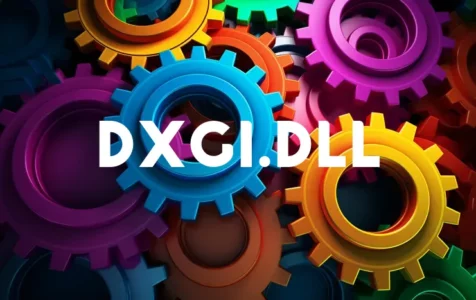Understanding DXGI.DLL
DXGI.DLL is a system file associated with the Windows operating system. It stands for DirectX Graphics Infrastructure, which is an integral part of Microsoft’s DirectX technology. DirectX is responsible for rendering video and complex graphics on Windows platforms, particularly in games and high-end graphics programs. Each version of Windows comes with a specific version of DirectX pre-installed.
Is DXGI.DLL Safe?
As a legitimate system file created by Microsoft, dxgi.dll is entirely safe to run. It’s designed to interface with DirectX and is not inherently harmful or malicious. However, it’s important to ensure that the dxgi.dll file on your system is the one provided by Microsoft, as hackers can disguise their malware with the same name.
Could it be a Virus or Malware?
In some cases, malware or a virus can be named to look like dxgi.dll to avoid detection. To ensure safety, users should scan their systems regularly with updated antivirus software. If the dxgi.dll file is located outside the standard Windows directories or has an unusual date of creation, it might be a sign that it’s not a legitimate file.
Common Issues Associated with DXGI.DLL
Errors related to dxgi.dll can occur for different reasons, including:
Expert Tip: For smoother PC performance, consider using a PC optimization tool. It handles junk files, incorrect settings, and harmful apps. Make sure it's right for your system, and always check the EULA and Privacy Policy.
Special offer. About Outbyte, uninstall instructions, EULA, Privacy Policy.
– Faulty application causing the dll file to not work properly.
– Accidental deletion or misplacement of the dxgi.dll file.
– Corruption of dxgi.dll by malicious software.
– A damaged Windows registry from a recent software change (install or uninstall).
– The necessity for the DLL file to be placed in a specific application or game folder.
These errors typically manifest with messages such as “dxgi.dll is missing” or “dxgi.dll error loading.” Some problems may arise during the use or installation of certain programs, Windows shutdown or boot, or even during Windows installation.
How to Fix Issues with DXGI.DLL
If you encounter problems with dxgi.dll, there are several ways to fix them:
1. Update DirectX: Make sure you have the latest version of DirectX installed on your Windows.
2. Install the latest Visual C++ redistributable: Sometimes, updating the Visual C++ redistributable can fix dll-related issues.
3. Run SFC (System File Checker):
– Open ‘Command Prompt’ as administrator (you can search for it in the Start menu).
– Enter `sfc /scannow` and press Enter.
– The process will start; it may take some time to complete.
– Restart your computer afterward.
4. Restore the DXGI.DLL file from Recycle Bin: If you’ve accidentally deleted the file, you can restore it, provided it hasn’t been permanently removed.
5. Run DISM (Deployment Image Servicing and Management):
– Open ‘Command Prompt’ as an administrator.
– Enter `DISM /Online /Cleanup-Image /RestoreHealth` and press Enter.
– Wait for the process to complete and then restart your computer.
6. Re-register the DLL file: Use the ‘regsvr32’ command in the command prompt to re-register the dxgi.dll file.
7. Perform a System Restore: If all else fails, system restore can roll back your system files and settings to an earlier point in time before the error occurred.
8. Seek further assistance on community forums if necessary. Ensure that any further troubleshooting follows suggestions from trusted sources or experienced tech specialists.
Remember, downloading DLL files from websites can pose a risk so always try to fix the problem natively within Windows or through trusted, authorized means like official Microsoft resources.
Community Discussions and Help
Community forums, such as the one referenced in the original text, are platforms where both qualified tech specialists and regular users can exchange experiences, solutions, and tips regarding common DLL issues. If you’re experiencing trouble related to the dxgi.dll file and require additional assistance beyond the fixes listed above, consider reaching out to these communities for help.
Please note that it’s always best to first attempt official troubleshooting methods such as using built-in Windows tools or seeking help directly through Microsoft support channels. Community solutions can be valuable but always proceed with caution and look for consensus or consistently positive feedback on any advice you find before proceeding.
